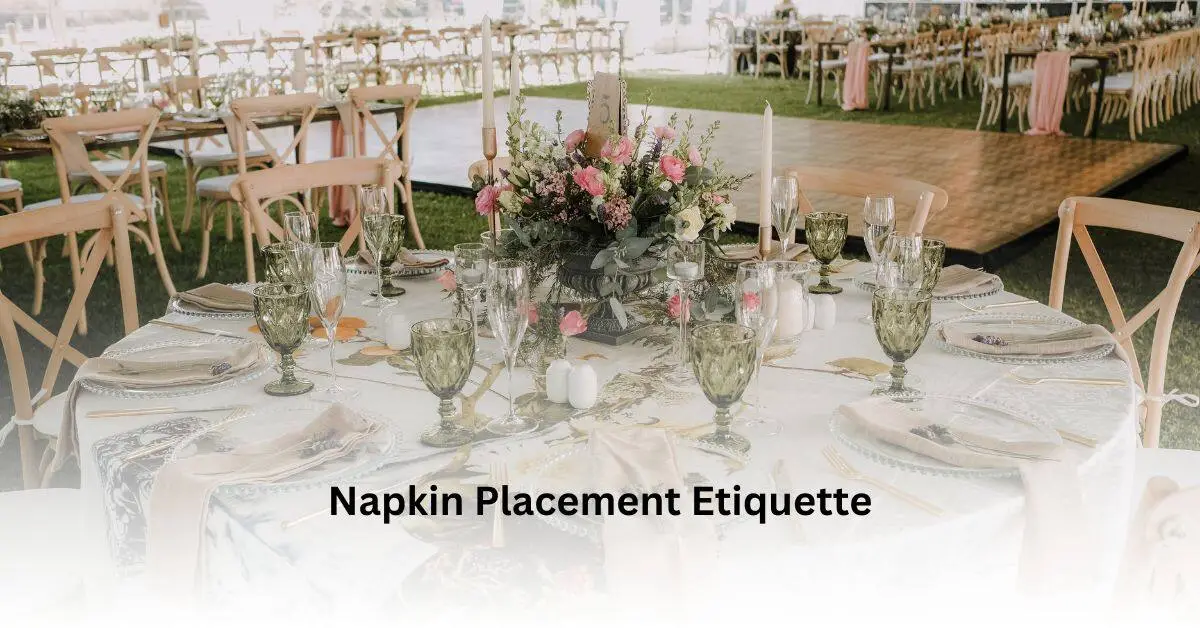Napkin placement holds a significant role in the realm of dining etiquette, serving as a subtle yet crucial element in conveying refinement and grace at the table. Beyond its practical function of ensuring cleanliness during a meal, the way a napkin is positioned speaks volumes about one’s sophistication and attention to detail.
In the intricate tapestry of dining etiquette, mastering proper napkin placement is akin to mastering a delicate art form. It signifies not only an understanding of decorum but also a respect for tradition and social harmony. Whether one is dining in a formal setting or enjoying a casual meal with friends, the placement of the napkin subtly signals one’s awareness and adherence to established norms of civility.
At the heart of every well-executed dining experience lies the mastery of Napkin Placement Etiquette. This skill extends far beyond mere aesthetics; it reflects one’s appreciation for the ritual of dining and the shared experience it entails. Proper napkin placement enhances the ambiance of the dining setting, creating an atmosphere of elegance and refinement that elevates the entire meal.
Beyond its symbolic significance, mastering napkin placement etiquette also fosters practical benefits. A correctly positioned napkin ensures convenience and comfort throughout the meal, allowing diners to focus on the culinary delights before them without distraction. Moreover, it promotes cleanliness and hygiene, underscoring the importance of respecting both oneself and one’s fellow diners.
Historical Significance of Napkins
Napkins, with their humble origins dating back to ancient civilizations, have traversed through time, evolving from simple practicalities to symbols of sophistication and etiquette. Understanding the historical journey of napkins provides invaluable insights into their significance in dining etiquette.
A. Origins of Napkins in Ancient Civilizations
The origins of napkins can be traced back to ancient civilizations such as Egypt, where wealthy individuals used small pieces of cloth to wipe their hands and mouths during meals. These early napkins were rudimentary in design, serving primarily utilitarian purposes rather than reflecting any sense of etiquette or refinement.
In ancient Rome, napkins, known as “mappae,” took on a more ceremonial role, symbolizing status and hierarchy. They were often adorned with intricate embroidery and used by the elite to signify their social standing during lavish banquets and feasts. However, it wasn’t until the Middle Ages that napkins began to assume a more standardized form and function in dining settings.
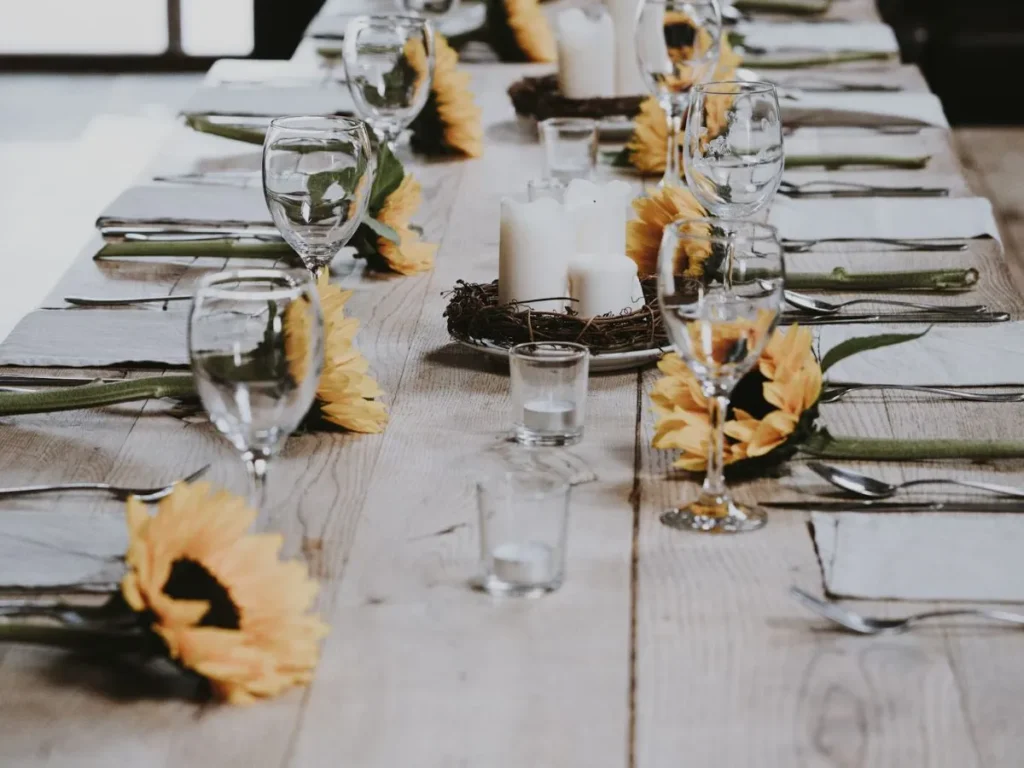
B. Evolution of Napkins and Their Role in Dining Etiquette Through History
Throughout history, the evolution of napkins paralleled the development of dining customs and etiquette. As dining became more formalized, so too did the conventions surrounding napkin use and placement. During the Renaissance period, for example, napkins became larger and more elaborately decorated, reflecting the opulence and grandeur of dining occasions among the nobility.
By the 18th and 19th centuries, napkins had become indispensable elements of table settings in aristocratic households across Europe. Their placement and folding techniques were meticulously prescribed, with etiquette manuals detailing the proper way to display and use napkins during meals. Napkin folding became an art form in its own right, with intricate designs adorning tables at elaborate social gatherings.
As society progressed into the modern era, napkins retained their significance in dining etiquette, albeit with some adaptations to changing cultural norms and lifestyles. While formal dining occasions still adhere to traditional napkin placement etiquette, casual and informal settings have witnessed a more relaxed approach, with napkins often placed informally on laps or alongside plates.
Napkin Placement Etiquette has thus evolved over centuries, reflecting the ever-changing dynamics of social customs and dining practices. Despite these changes, the underlying principles of respect, decorum, and hospitality remain central to the art of napkin use, reminding us of the enduring legacy and importance of this seemingly simple yet profoundly symbolic dining accessory.
Types of Napkins
Napkins come in various forms, each serving its purpose and reflecting different preferences and occasions. Understanding the different types of napkins available allows for informed choices and enhances the overall dining experience.
Cloth Napkins vs. Paper Napkins: Pros and Cons
Cloth Napkins:
- Cloth napkins exude elegance and sophistication, making them ideal for formal dining occasions. They offer a luxurious feel and can be customized to match the decor or theme of the event. Additionally, cloth napkins are reusable, reducing waste and environmental impact.
However, cloth napkins require laundering after each use, which may be inconvenient for some. They also come with a higher initial cost compared to disposable alternatives.
Paper Napkins:
- Paper napkins are convenient and practical for everyday use, offering quick cleanup without the hassle of washing and ironing. They come in a variety of designs and colors, making them suitable for casual dining settings or themed parties. Additionally, paper napkins are disposable, making them a convenient option for large gatherings or outdoor events.
On the downside, paper napkins lack the elegance and texture of cloth napkins. They are also less environmentally friendly, contributing to waste and pollution.
Different Styles and Sizes of Napkins Used in Formal and Informal Settings
Napkins come in a range of styles and sizes to suit various dining settings and occasions.
Formal Settings:
- In formal dining settings, larger-sized cloth napkins are often preferred to convey an air of sophistication and refinement. These napkins may feature elaborate designs or monograms and are typically folded in intricate patterns to enhance the table’s aesthetic appeal.
Napkin Placement Etiquette in formal settings emphasizes precise placement to complement the overall table arrangement and elevate the dining experience.
Informal Settings:
- Informal dining occasions may call for smaller-sized napkins, either cloth or paper, depending on the preference of the host. These napkins are more casually folded or placed on the table, reflecting a relaxed atmosphere conducive to comfortable dining.
While Napkin Placement Etiquette in informal settings may be less rigid, basic guidelines still apply to ensure a neat and organized table setup.
Eco-Friendly Alternatives to Traditional Napkins
In response to growing environmental concerns, eco-friendly alternatives to traditional napkins have emerged, offering sustainable options for conscientious consumers.
Reusable Cloth Napkins:
- Reusable cloth napkins are an eco-friendly alternative to disposable options, offering the same elegance and functionality with reduced environmental impact. Made from sustainable materials such as organic cotton or linen, these napkins can be washed and reused multiple times, minimizing waste and conserving resources.
Incorporating reusable cloth napkins into daily dining routines not only promotes sustainability but also reinforces Napkin Placement Etiquette by encouraging mindful use and care of dining accessories.
Biodegradable Paper Napkins:
- Biodegradable paper napkins are another eco-friendly option for those who prefer the convenience of disposable napkins. Made from recycled materials or sustainable fibers, these napkins decompose naturally over time, reducing the burden on landfills and ecosystems.
While not as durable as cloth napkins, biodegradable paper napkins offer a practical solution for casual dining occasions or on-the-go use, aligning with Napkin Placement Etiquette principles of environmental stewardship and responsible consumption.
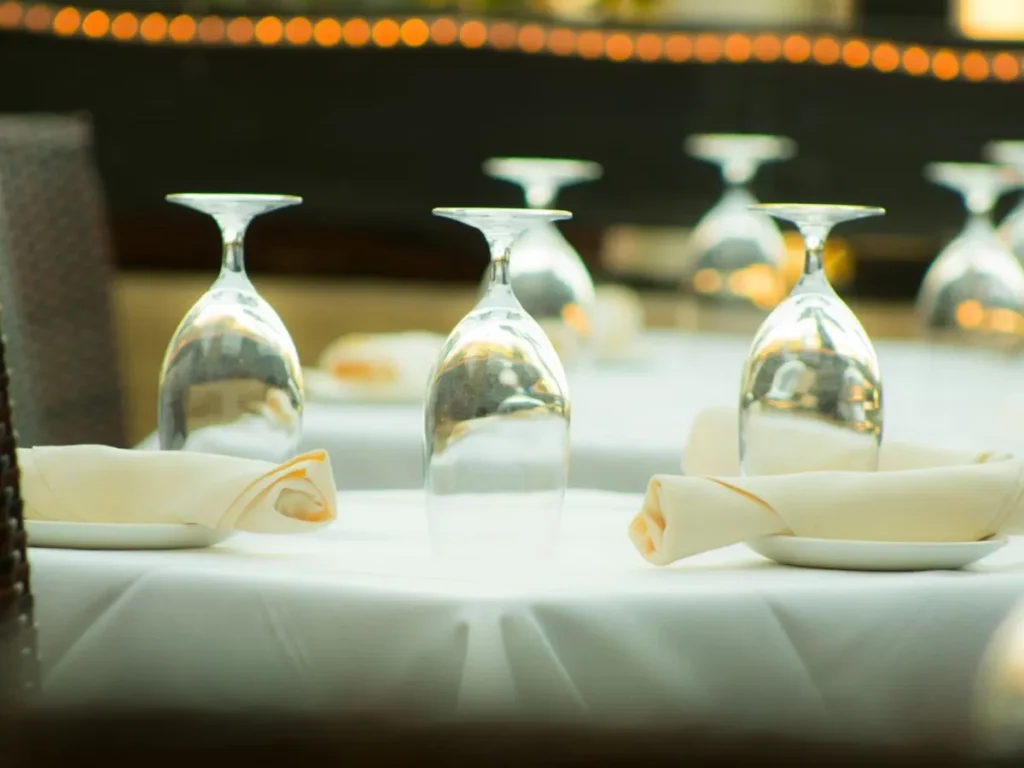
Basic Napkin Placement Etiquette
Mastering napkin placement etiquette is essential for creating an elegant and polished dining experience. Whether dining in a formal setting, enjoying an informal meal with friends, or hosting a casual gathering outdoors, understanding the proper placement of napkins enhances the overall ambiance and ensures a seamless dining experience.
Formal Dining Settings:
Placement of Napkin on the Left Side of the Place Setting:
- In formal dining settings, the napkin is traditionally placed on the left side of the place setting, either neatly folded or arranged in an elegant design. This positioning allows guests to easily access the napkin without disrupting the table setting.
Folded vs. Unfolded Napkins:
- While folded napkins are common in formal dining settings, some occasions may call for unfolded napkins to showcase their luxurious texture and craftsmanship. Regardless of folding style, Napkin Placement Etiquette dictates that napkins should be neatly presented and easily accessible to diners.
Different Folds for Formal Occasions:
- Formal occasions often feature intricately folded napkins, such as the bishop’s hat fold or the fan fold, to add a touch of sophistication to the table setting. These folds require precision and attention to detail, enhancing the visual appeal of the dining experience.
Informal Dining Settings:
Placement of Napkin on the Lap:
- In informal dining settings, guests are encouraged to place their napkins on their laps upon being seated. This simple gesture not only protects clothing from spills but also signifies readiness to begin the meal. Napkin Placement Etiquette emphasizes the importance of placing the napkin discreetly on the lap to avoid drawing unnecessary attention.
Informal Folding Techniques:
- Informal dining occasions may call for simpler napkin folding techniques, such as the basic rectangle fold or the casual roll-up fold. These techniques strike a balance between functionality and aesthetics, providing a practical solution for everyday dining while still adhering to Napkin Placement Etiquette principles.
Casual and Outdoor Dining:
Considerations for Picnics, Barbecues, and Casual Gatherings:
- In casual and outdoor dining settings, Napkin Placement Etiquette takes on a more relaxed approach, with napkins often placed informally on tables or picnic blankets. While formal folds may be impractical in these settings, guests are encouraged to keep their napkins within easy reach for convenience.
Practical Tips for Napkin Placement in Less Formal Settings:
- Practicality is key when it comes to napkin placement in casual and outdoor dining environments. Opt for durable, disposable napkins that can withstand outdoor conditions, and consider using napkin holders or weighted napkin rings to prevent them from blowing away in the wind. Napkin Placement Etiquette encourages guests to prioritize functionality and comfort while still maintaining a sense of decorum.
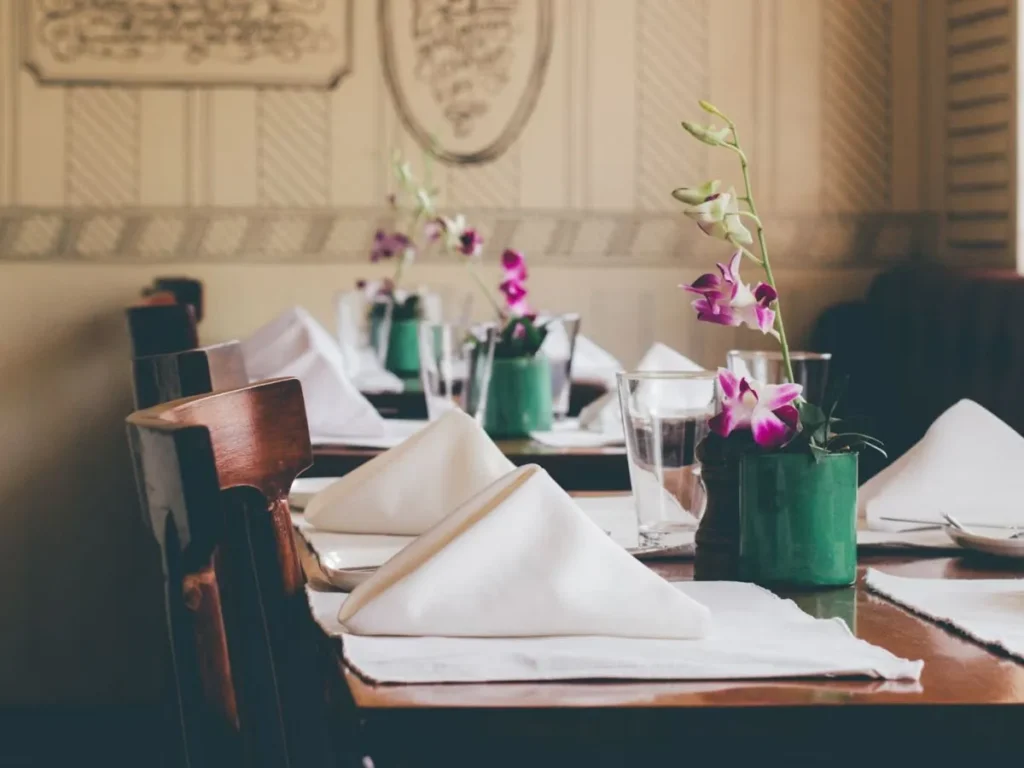
Advanced Napkin Folding Techniques
Elevate your dining experience with advanced napkin folding techniques that add a touch of elegance and flair to any special occasion. From weddings and romantic dinners to elegant events and nautical-themed gatherings, mastering these creative folds will impress your guests and elevate your table setting to new heights.
Creative Folds for Special Occasions:
Swan Fold for Weddings and Romantic Dinners: The swan fold is a timeless classic, perfect for adding a romantic and whimsical touch to wedding receptions or intimate dinners for two. This intricate fold creates a graceful swan shape, symbolizing love and beauty. Napkin Placement Etiquette emphasizes the importance of positioning the swan napkin fold strategically on the table to enhance its visual impact and complement the overall decor.
Rose Fold for Elegant Events: The rose fold exudes elegance and sophistication, making it ideal for elegant events such as cocktail parties or formal dinners. This fold transforms a simple napkin into a stunning rose blossom, evoking a sense of luxury and refinement. Napkin Placement Etiquette recommends placing the rose napkin fold as a centerpiece or accent on each place setting to create a striking focal point at the table.
Sailboat Fold for Nautical-Themed Gatherings: Bring a touch of maritime charm to your table with the sailboat fold, perfect for nautical-themed gatherings or summer soirees. This fold creates a delightful sailboat shape, complete with billowing sails and a sleek hull. Napkin Placement Etiquette suggests arranging the sailboat napkin fold alongside coastal-inspired table decor or using it to adorn seafood-themed menus for a cohesive and immersive dining experience.
Napkin Etiquette Dos and Don’ts
Mastering napkin etiquette is not just about knowing where to place your napkin; it’s also about how to use it gracefully and respectfully throughout the meal. Adhering to napkin dos and don’ts ensures a seamless and refined dining experience that reflects your appreciation for Napkin Placement Etiquette.
Dos:
Place Napkin on the Lap Upon Sitting Down: As a fundamental gesture of courtesy, place your napkin on your lap immediately upon being seated. Napkin Placement Etiquette dictates that the napkin should be unfolded discreetly and placed across the lap, with the fold facing towards you. This simple act signals readiness to begin the meal and sets the tone for the dining experience.
Use the Napkin to Gently Dab the Mouth, Not Wipe Vigorously: When using your napkin to wipe your mouth or dab away crumbs, do so with gentle and discreet movements. Avoid vigorous wiping or scrubbing, as this can appear unsightly and disrupt the flow of conversation. Napkin Placement Etiquette emphasizes the importance of maintaining poise and elegance while using the napkin to ensure a polished dining experience.
Refold the Napkin Neatly if Leaving the Table Temporarily: If you need to leave the table temporarily during the meal, Napkin Placement Etiquette dictates that you should refold your napkin neatly and place it on your chair or to the left of your plate. This signals to the server and your dining companions that you intend to return and helps maintain the cleanliness and orderliness of the table setting.
Don’ts:
Tuck Napkin Into Clothing or Collar: One of the most common faux pas in napkin etiquette is tucking the napkin into one’s clothing or collar. Not only does this detract from the elegance of the dining experience, but it also risks staining or wrinkling your attire. Napkin Placement Etiquette advises against this practice and recommends keeping the napkin neatly on your lap throughout the meal.
Crumple or Toss Napkin on the Table After Use: After using your napkin, resist the temptation to crumple it up or toss it onto the table. Instead, gently fold the napkin and place it to the left of your plate when you have finished your meal. Napkin Placement Etiquette emphasizes the importance of treating the napkin with respect and care, even after use, to maintain the elegance of the table setting.
Use the Napkin to Clean Other Parts of the Body: While the primary purpose of a napkin is to maintain cleanliness during the meal, it is not intended for use on other parts of the body. Avoid using the napkin to wipe your face, hands, or any other body parts, as this is considered unsanitary and unhygienic. Napkin Placement Etiquette stresses the importance of using the napkin solely for its intended purpose and avoiding any actions that may detract from the dining experience.
Cultural Considerations
Navigating napkin etiquette across cultures and regions requires sensitivity to local customs and traditions. Understanding the cultural significance attached to napkin use can enhance your dining experience and ensure you respect the practices of the host country or region.
Differences in Napkin Etiquette Across Cultures and Regions
Eastern Cultures: In many Eastern cultures, such as Japan and China, the use of napkins differs significantly from Western customs. Instead of traditional cloth or paper napkins, disposable wet towels known as “oshibori” are commonly provided to diners to cleanse their hands before eating. Napkin Placement Etiquette may involve unfolding the oshibori and using it to cleanse hands and face discreetly before meals.
Middle Eastern and South Asian Cultures: In Middle Eastern and South Asian cultures, diners often use bread or flatbread, such as naan or pita, to scoop up food instead of utensils. As a result, napkins may be used sparingly or not at all during meals. Napkin Placement Etiquette may involve observing local customs and following the lead of your hosts regarding napkin use.
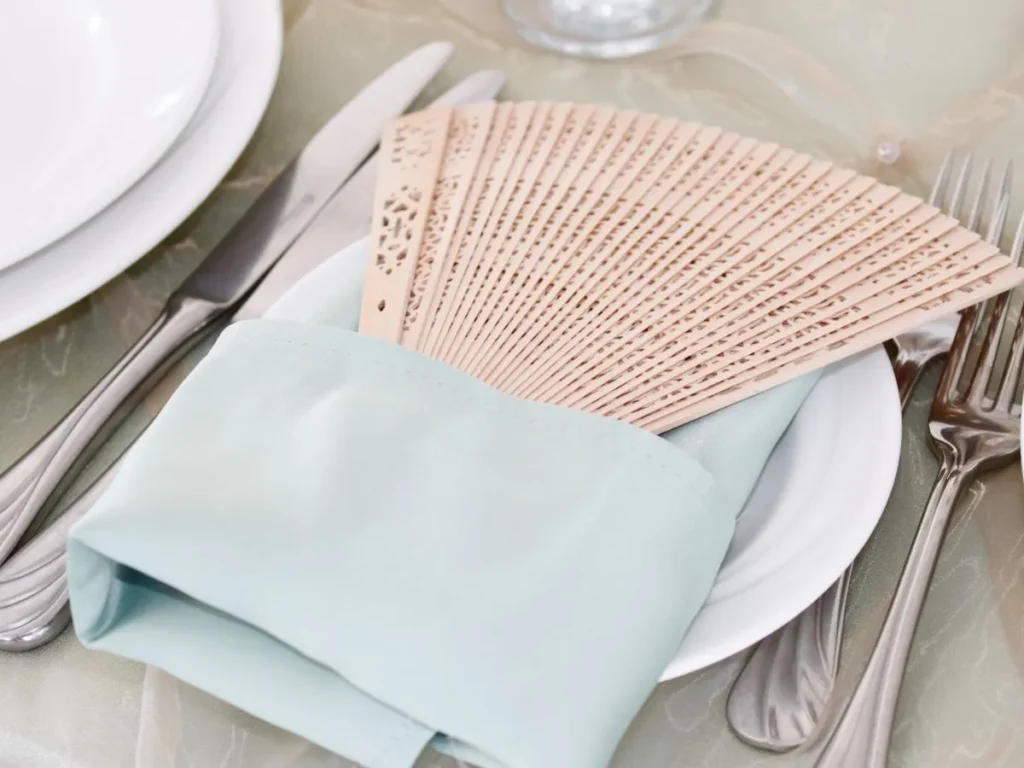
Tips for Navigating Napkin Customs When Dining Internationally
Observe and Follow Local Customs: When dining internationally, observe how locals use napkins and follow their lead. Pay attention to whether napkins are provided, how they are placed, and how diners use them during the meal. By respecting local customs, you demonstrate cultural awareness and consideration for your hosts.
Ask for Guidance if Unsure: If you’re unsure about napkin etiquette in a particular culture or region, don’t hesitate to ask for guidance. Your hosts or servers will appreciate your interest in respecting their customs and will likely provide helpful instructions or demonstrations. Napkin Placement Etiquette emphasizes the importance of humility and openness to learning when dining in unfamiliar cultural settings.
Adapt to Local Practices: Be willing to adapt your napkin usage to conform to local practices, even if they differ from what you’re accustomed to. Whether it involves using a different type of napkin or folding it in a specific manner, embracing local customs demonstrates respect for cultural diversity and Napkin Placement Etiquette.
Practical Tips for Napkin Care
Proper care and maintenance of napkins are essential not only for preserving their quality but also for upholding Napkin Placement Etiquette standards. Whether you’re using cloth napkins or eco-friendly alternatives, following these practical tips will ensure your napkins remain in pristine condition while minimizing environmental impact.
Proper Laundering and Storage of Cloth Napkins
Regular Washing Schedule: Establish a regular washing schedule for cloth napkins to prevent stains from setting and odors from lingering. Napkin Placement Etiquette dictates that cloth napkins should always be clean and fresh for use at the dining table.
Separate Wash Loads: Wash cloth napkins separately from other laundry to prevent color bleeding and ensure thorough cleaning. Use mild detergent and avoid harsh chemicals that may damage the fabric. Napkin Placement Etiquette emphasizes the importance of maintaining the integrity of cloth napkins through gentle washing practices.
Proper Storage: Store clean napkins in a dry, well-ventilated area to prevent mold and mildew growth. Fold napkins neatly to minimize wrinkles and creases, ensuring they’re ready for use at a moment’s notice. Napkin Placement Etiquette recommends storing cloth napkins in a designated drawer or cupboard to keep them organized and easily accessible.
Eco-Friendly Practices for Napkin Usage and Disposal
Reusable Alternatives: Opt for reusable cloth napkins or eco-friendly alternatives, such as bamboo or linen napkins, to reduce waste and minimize environmental impact. Napkin Placement Etiquette encourages the use of sustainable materials that align with eco-conscious values while still maintaining elegance and refinement at the dining table.
Composting or Recycling: After use, dispose of napkins responsibly by composting organic materials or recycling paper napkins. Avoid contaminating recycling bins with food residues or grease stains, as this may hinder the recycling process. Napkin Placement Etiquette underscores the importance of environmentally responsible practices in all aspects of napkin usage and disposal.
Minimalist Approach: Adopt a minimalist approach to napkin usage by providing one napkin per person and encouraging guests to use them judiciously. Napkin Placement Etiquette emphasizes the principle of moderation, ensuring napkins are used for their intended purpose without excess or waste.
Also Read: What Happens If You Dine and Dash?
Conclusion
In conclusion, mastering Napkin Placement Etiquette is not merely about adhering to social norms; it’s a reflection of one’s respect for tradition, refinement, and hospitality. From formal dinners to casual gatherings, the way napkins are placed and used can significantly enhance the dining experience. By understanding the historical significance of napkins, exploring different types and folding techniques, and embracing cultural considerations, individuals can elevate their dining etiquette to new heights. With practical tips for napkin care and eco-friendly practices, maintaining elegance at the table becomes not only a matter of tradition but also a commitment to sustainability and responsible stewardship.
